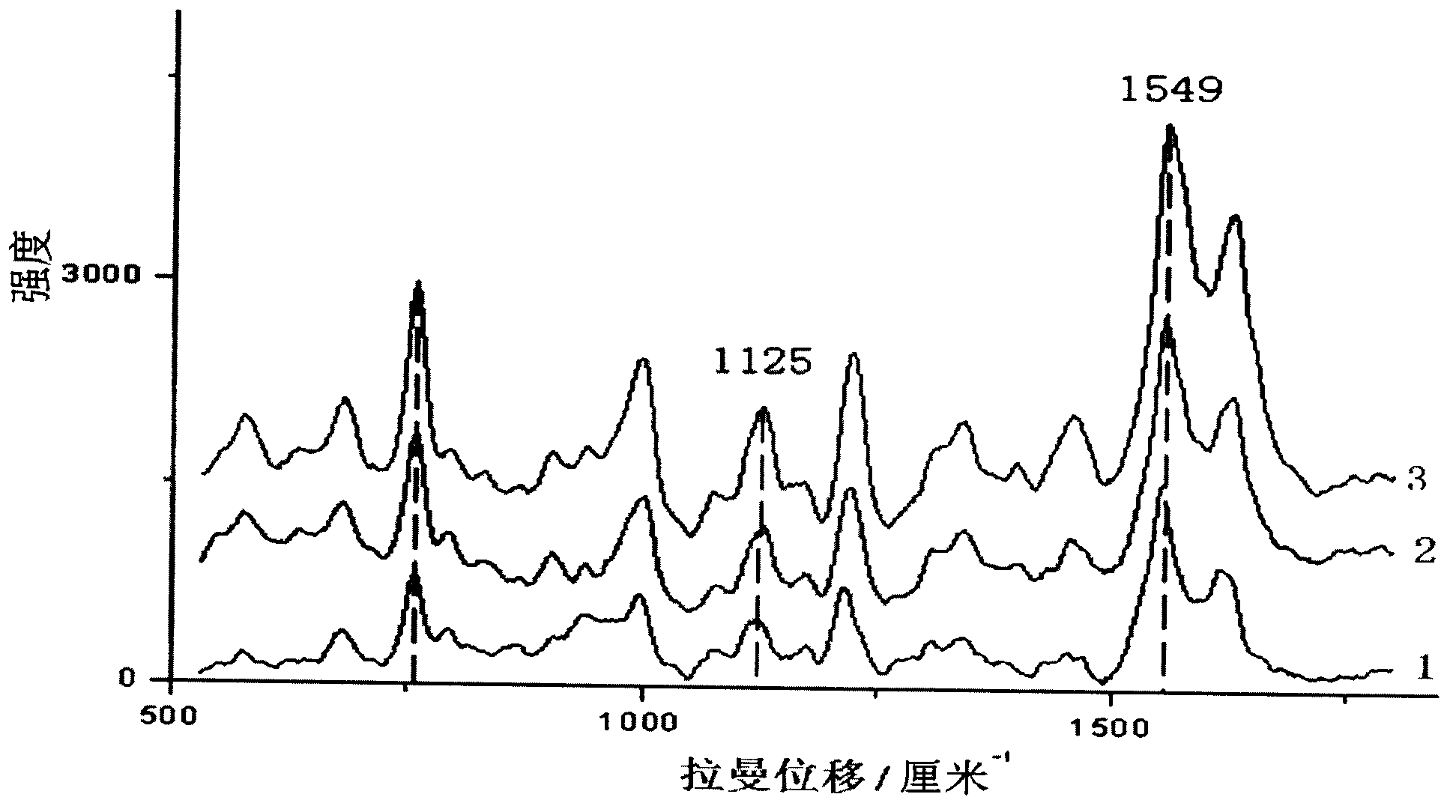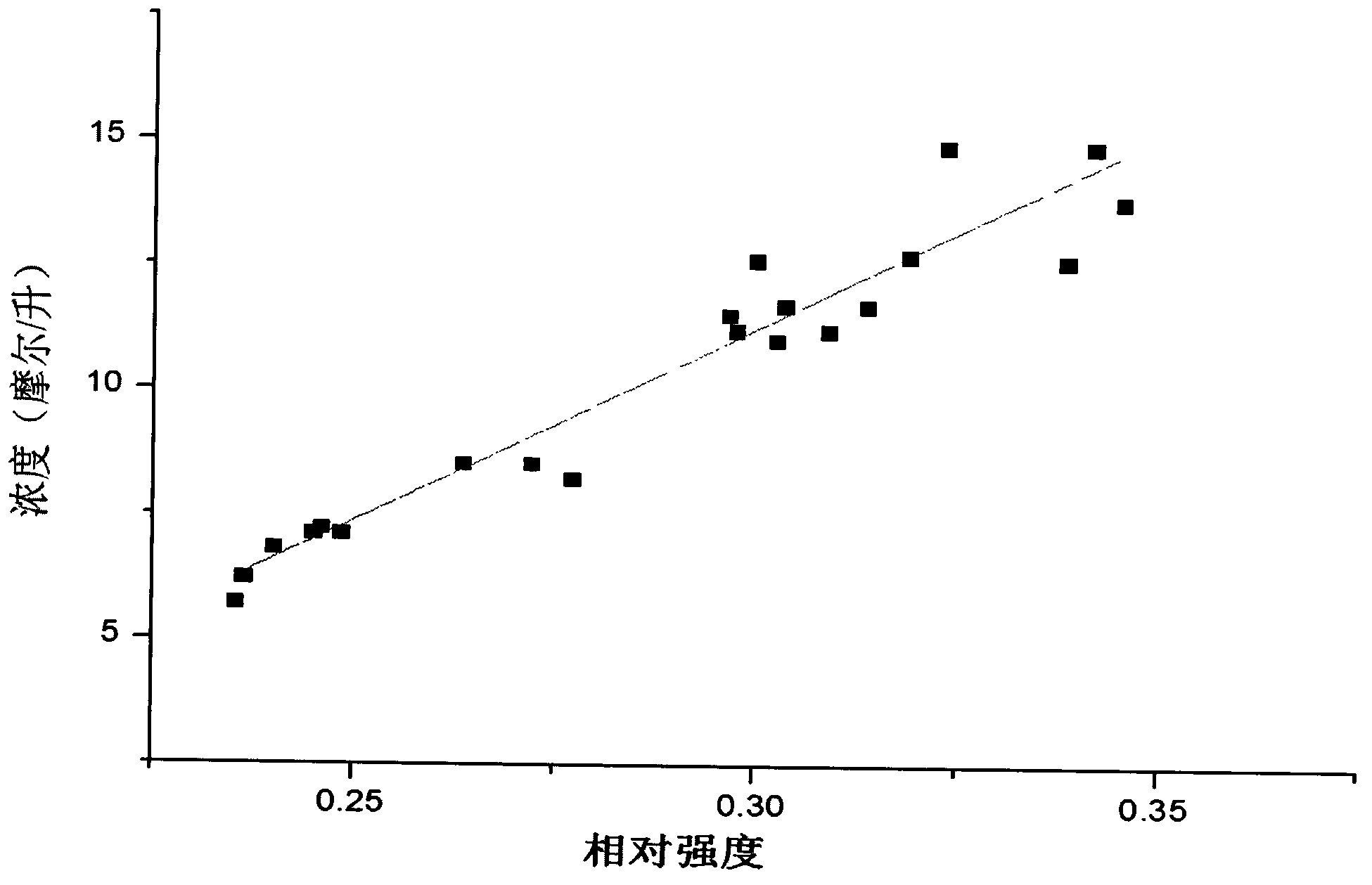Lossless method for quantitatively detecting blood glucose by utilizing Raman spectrum
A technology of Raman spectroscopy and quantitative detection, which is applied in the field of non-destructive quantitative detection of blood glucose without the need for blood sampling to quantitatively measure glucose concentration in skin blood by using Raman spectroscopy technology, which can solve the problems of large spectral differences, large interference, and low blood glucose concentration. To achieve the effect of overcoming signal strength drift
- Summary
- Abstract
- Description
- Claims
- Application Information
AI Technical Summary
Problems solved by technology
Method used
Image
Examples
specific example
[0022] The following is an example of using the method provided by the present invention to quantitatively measure blood glucose concentration.
[0023] The laser light emitted from the laser diode 1 is filtered by the interference filter 2, and reflected by the mirror 3 to the dichroic mirror 4. The function of the dichromatic mirror 4 is to reflect the laser light, and the Raman spectrum higher than the laser wavelength can pass through. The dichroic mirror 4 reflects the laser light to the reflection mirror 5, and the reflection mirror 5 guides the laser light into the lens 6, and the lens 6 focuses the laser light through the slide glass 7 and the skin into the blood vessel. The Raman spectrum excited at the laser focus passes through the slide glass 7, the lens 6, the mirror 5 and the dichroic mirror 4, passes through the bandpass (or notch) filter 9, enters the spectrometer 10, and is split by the spectrometer 10 , imaged on CCD11. The computer 12 connected with CCD11 r...
PUM
 Login to View More
Login to View More Abstract
Description
Claims
Application Information
 Login to View More
Login to View More - R&D
- Intellectual Property
- Life Sciences
- Materials
- Tech Scout
- Unparalleled Data Quality
- Higher Quality Content
- 60% Fewer Hallucinations
Browse by: Latest US Patents, China's latest patents, Technical Efficacy Thesaurus, Application Domain, Technology Topic, Popular Technical Reports.
© 2025 PatSnap. All rights reserved.Legal|Privacy policy|Modern Slavery Act Transparency Statement|Sitemap|About US| Contact US: help@patsnap.com



